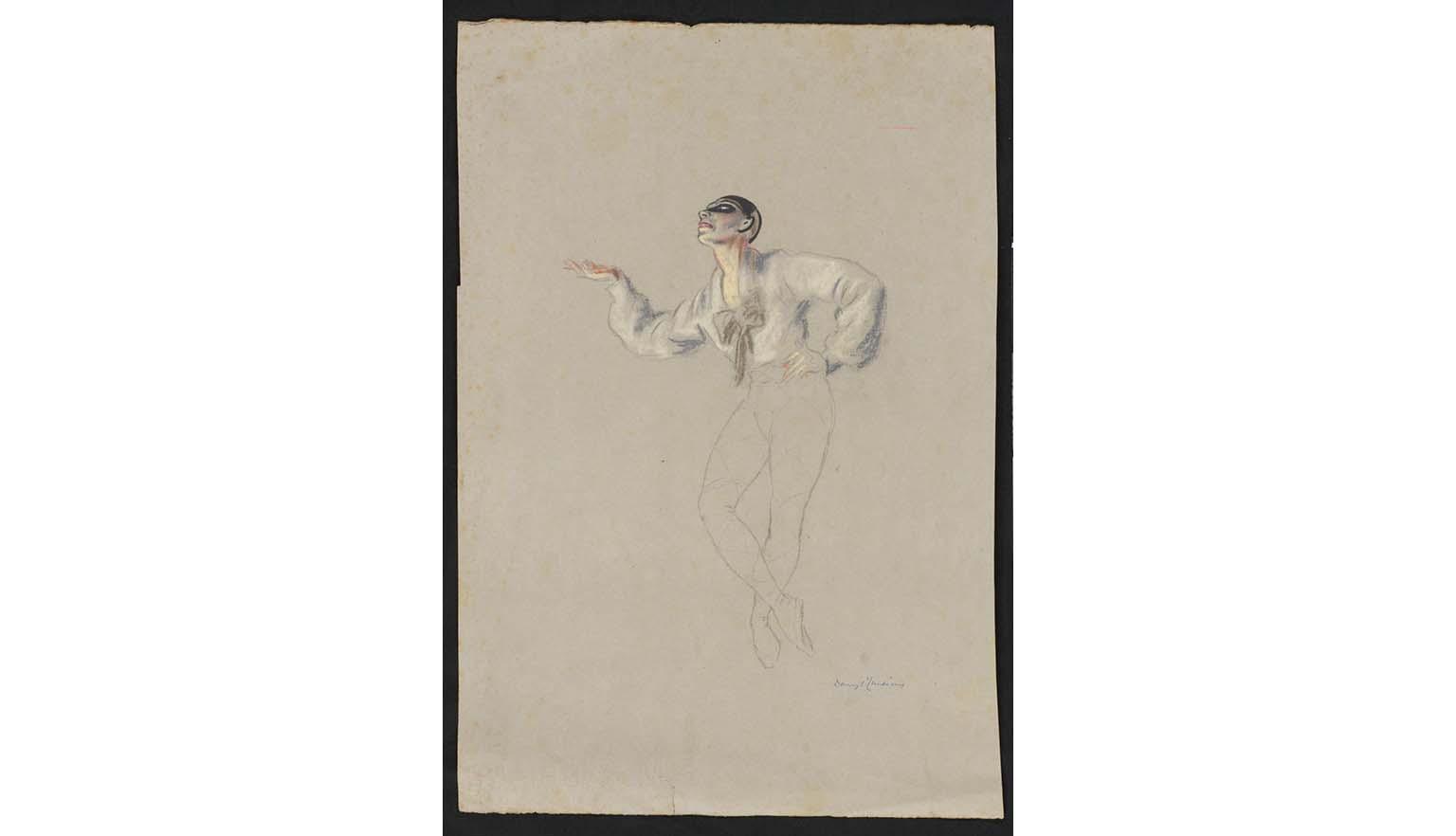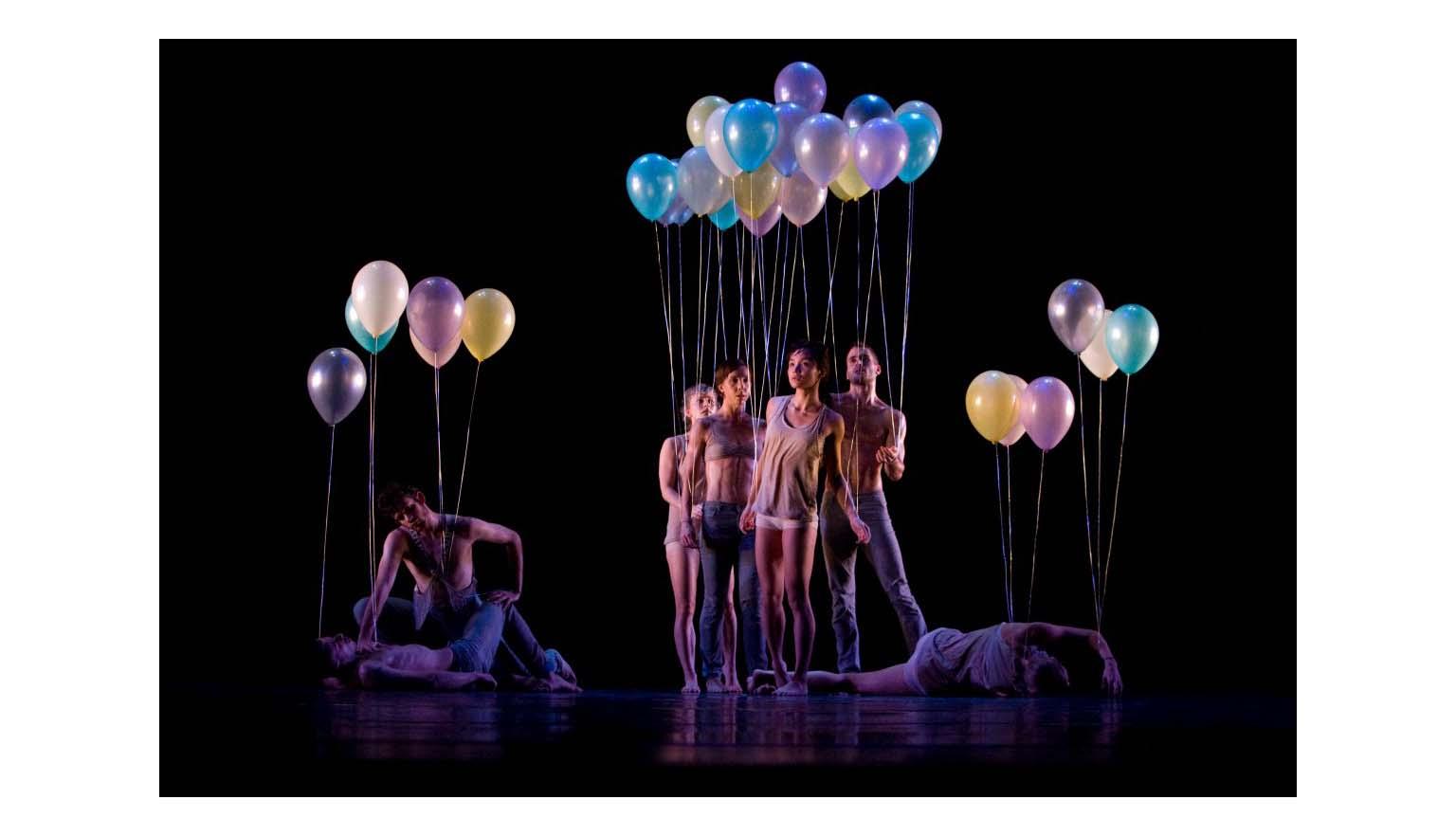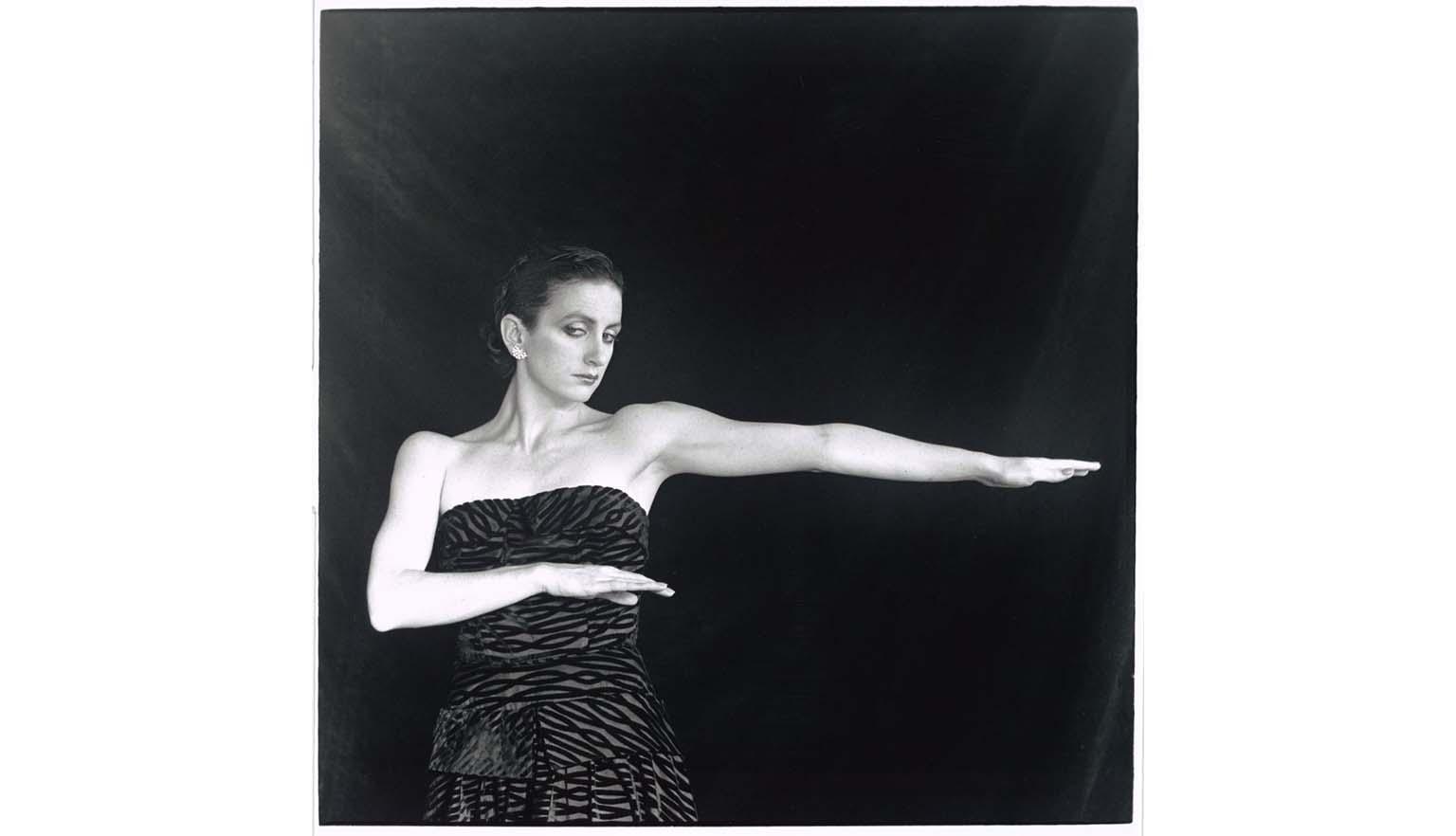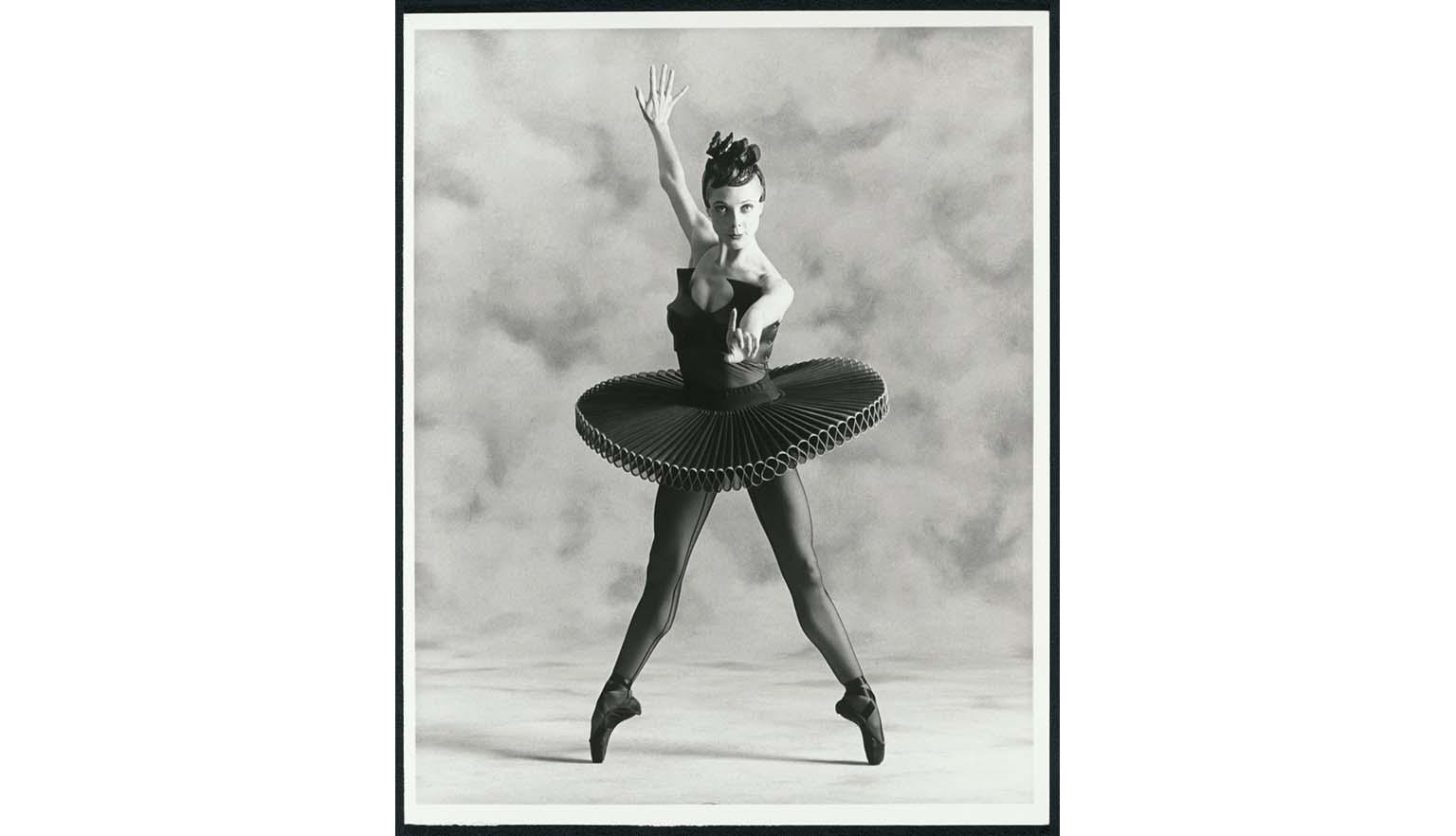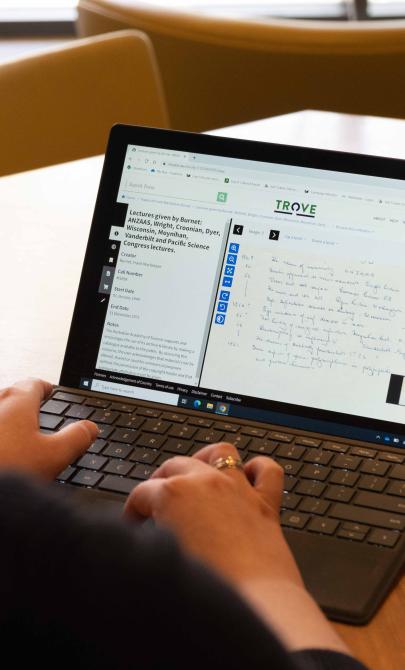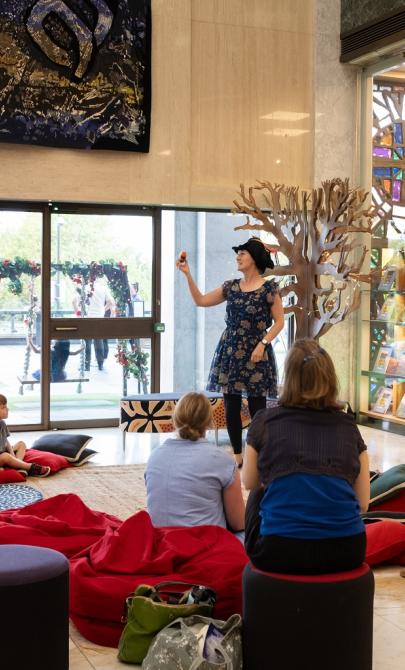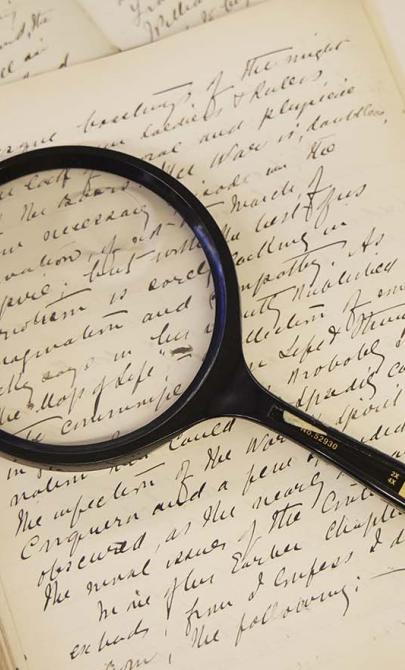Dance
Indigenous dance
Ceremonial dancing is central to many Indigenous cultures. These ceremonies vary between communities but often include dance, music, song and intricate body decorations. Body paint and costumes often show the type of ceremony being performed.
Bangarra Dance Theatre
Bangarra Dance Theatre is Australia’s leading First Nations dance company. It was founded in 1989 and shares Indigenous stories with audiences around the world.
In 1992, Bangarra performed its first full-length work, Praying Mantis Dreaming. The piece was created by Nunukul Munaldjali man Stephen Page, who also became the company’s artistic director. It tells the story of a young girl guided by the Praying Mantis Spirit as she journeys from her Country to the city.
Stephen Page and his brothers Russell and David were key contributors to Bangarra’s work.
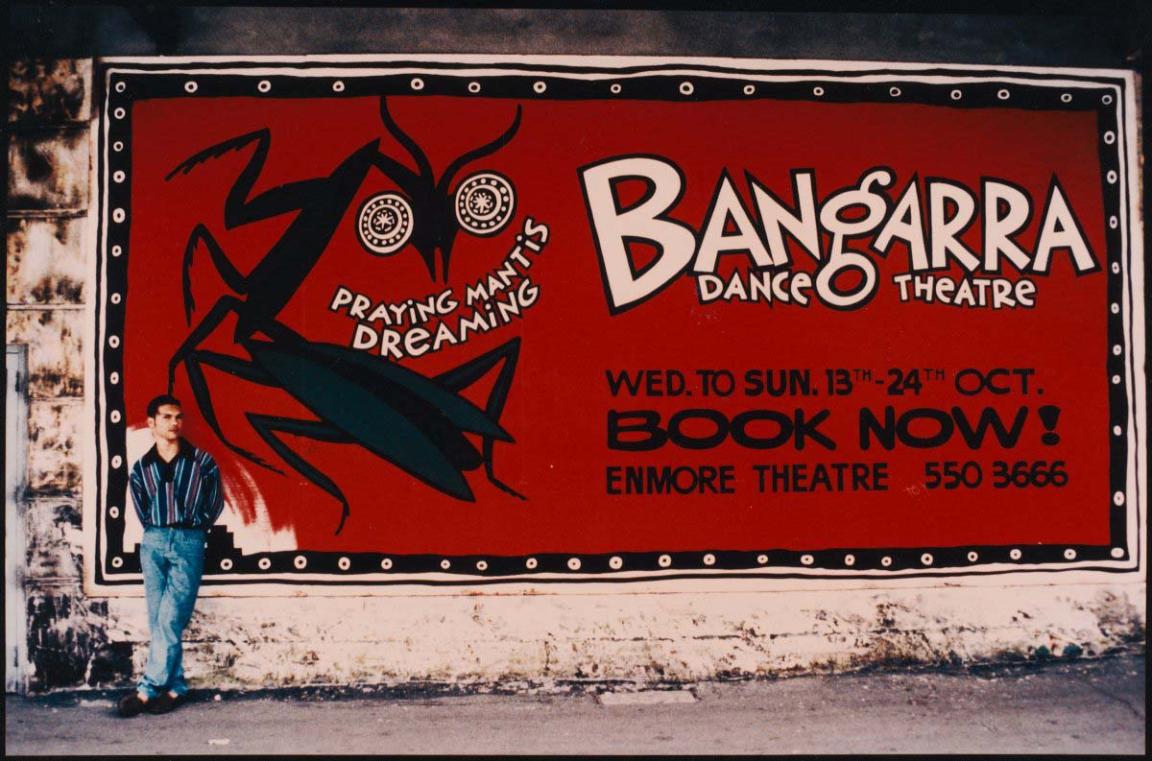
Tim Webster, Stephen Page with poster for "Praying mantis dreaming", nla.gov.au/nla.obj-136369970
Tim Webster, Stephen Page with poster for "Praying mantis dreaming", nla.gov.au/nla.obj-136369970
Noel Tovey
Noel Tovey was the first Indigenous man in Australia to work as a professional dancer. He used solo performance to share his life story and played the lead role in Skipping on Stars, a work inspired by tightrope walker Con Colleano. The performance was part of the 25th anniversary of the Flying Fruit Fly Circus.
Djuki Mala
Djuki Mala is a dance troupe from Elcho Island, off the coast of Arnhem Land in the Northern Territory. Their performances blend comedy and traditional Yolngu culture, featuring ceremonial body paint, traditional weapons like gara (spears) and galpu (spear throwers), and vibrant movement. The troupe became internationally known after their YouTube debut.
Ballet
In the early 1900s, international ballet companies introduced many Australians to ballet for the first time. Between 1936 and 1940, three troupes from the famous Russian Ballets Russes toured Australia, organised by J.C. Williamson Ltd. These visits helped shape Australian dance history.
Some of the visiting dancers stayed and created local companies. Hélène Kirsova and Edouard Borovansky were among them.
Irina Baronova
Irina Baronova (1919–2008) toured Australia with the Ballets Russes as one of its youngest performers. She later recalled how warmly Australian audiences treated the dancers:
'The reception we were getting and the amount of people that came on the pier to see us off… That was so touching… we never experienced [this] anywhere else.' - Irina Baronova interviewed by Lee Christofis
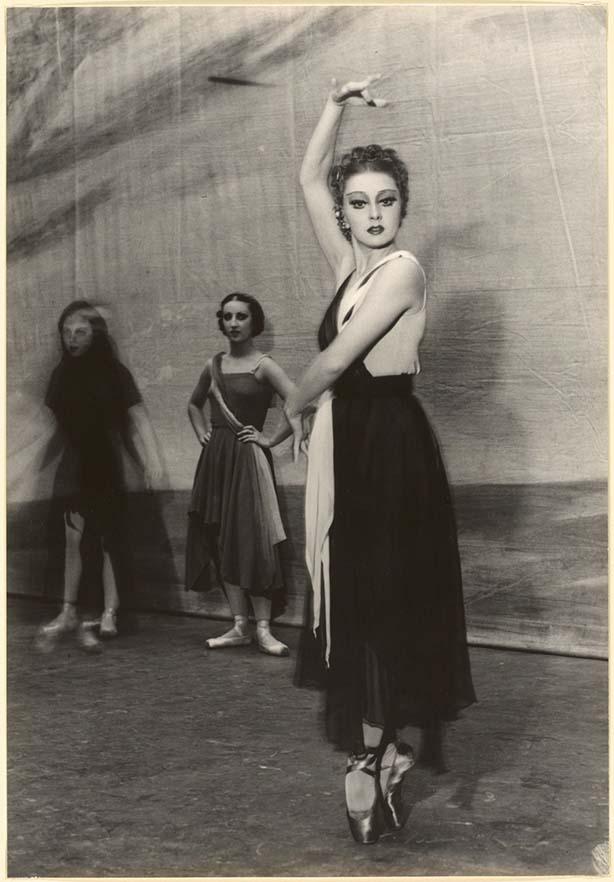
Max Dupain, Portrait of Irina Baronova in Choreartium, nla.gov.au/nla.obj-139588424
Max Dupain, Portrait of Irina Baronova in Choreartium, nla.gov.au/nla.obj-139588424
The Australian Ballet
The Australian Ballet was founded in 1962, led by artistic director Peggy van Praagh. In 1963, the company began touring internationally. In the 1960s and 1970s, ballet stars Margot Fonteyn and Rudolf Nureyev performed with the company during its season in France, gaining it international attention.
Meryl Tankard
Meryl Tankard began her career with the Australian Ballet before joining the Tanztheater Wuppertal in Germany, where she was a principal soloist for ten years. She created several acclaimed works, including:
Travelling Light (1986)
Two Feet (1988), based on the life of ballerina Olga Spessivtseva, who had toured Australia in 1934.
Learning activities
Activity 1: The elements of dance
Ask students to define these five key dance elements:
- Body
- Action
- Space
- Time
- Energy
Then, have them demonstrate each through short improvised movements.
Activity 2: Respond to a performance
Watch a dance performance (live or recorded). Ask students to discuss:
- How did the dancers use space and energy to create different emotions (like strength, isolation or joy)?
- What was the relationship between the dancers and the audience?
Activity 3: Compare dance across generations
As a homework activity, students can ask a parent, grandparent, older sibling or guardian:
- What dances were popular when you were young?
- Do people still do those dances today?
Have students compare these styles to their own favourite dance moves. What’s different? What’s the same?
